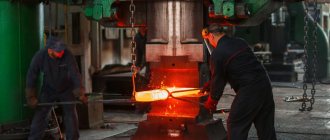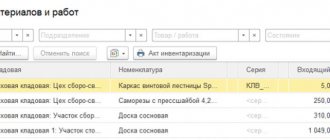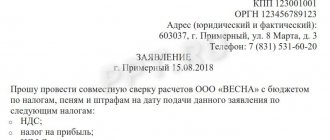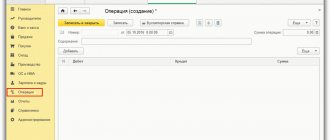Regulation of labor protection
Occupational safety is the most important area in every company, especially where it has its own production or there are any negative factors.
The basis is:
- thematic regulatory briefing;
- personal and group professional, job descriptions.
Important!
In order for the corporate labor protection procedure to be organized correctly, it is necessary to acquire the appropriate set of documentation. In addition, it is necessary to develop a procedure for instructing personnel on the topic of labor protection.
Sample labor safety instructions
What instructions should the company have?
Article 212 of the Labor Code of the Russian Federation states that the employee must be informed about all the risks, harmful and hazardous production factors at a particular workplace. The employee must know what protective measures he is required to use to eliminate health hazards.
Therefore, labor safety instructions must be developed at each workplace, depending on the tools, equipment, machines used by employees, as well as work conditions, for example, working at heights, working in electrical installations, working in confined spaces.
Each enterprise must have its own unique list of occupational safety instructions. Safety instructions are mandatory for all enterprises:
- when working on a PC and other office equipment.
- during operation, maintenance and repair of equipment
- during hot work
- when working at height
- when performing electric and gas welding work
As you can see, instructions are developed either by type of work or by profession. But there are also additional instructions, for example, when carrying out traveling work, when sending on a business trip, etc.
Types of standards
The regulatory system for the safety of the physical health of personnel is a set of legal norms aimed at creating safe working conditions.
These standards are recorded in:
- domestic legislation;
- technical safety rules;
- collective agreements;
- departmental guidelines and orders.
They contain:
- Standards governing the preparation of plans and the actual organization of work processes in companies.
- Norms and rules for technical safety and industrial sanitation.
- Standards defining social benefits and compensation for working in conditions detrimental to health.
- Regulations regulating the powers of supervisory structures and monitoring the preservation of favorable working conditions.
- Regulations fixing the legal liability of officials for violation of established legal requirements.
Who develops the instructions
It is the employer’s responsibility to develop and approve labor safety guidelines (Article 212 of the Labor Code).
The staff, in turn, must familiarize themselves with their instructions in a timely manner. This must be done before signing an individual employment contract or at the same time (Article 68 of the Labor Code of the Russian Federation).
Attention! An employee can begin his direct work only after instructions have been given to him.
There must be a corresponding entry in the employer’s register or journal about the briefing. Usually, a separate register/journal is created for these purposes. Or it is permissible to create an introductory sheet directly in the rules (instructions) themselves on paper.
In addition, it is allowed to receive receipts from each employee, which indicates: who, when, and what they were familiar with. This is confirmed by the personal signature of the familiar employee. Such receipts are attached to the rules (personal, collective instructions).
The manual is developed for each position on the staff, profession involved in the company or type of work performed.
Attention! The employer develops and approves rules and instructions on labor protection for personnel, taking into account the opinion of the trade union or other authorized representative body on the part of workers (Part 22 of Article 212 of the Labor Code of the Russian Federation). Download for viewing and printing:
Labor Code of the Russian Federation dated December 30, 2001 N 197-FZ (as amended on June 18, 2017)
Registration of labor protection acts
According to Art. 211 of the Labor Code of the Russian Federation, state labor protection standards are mandatory for legal entities and individuals when they perform any kind of business, including:
- design, construction (reconstruction) and use of objects;
- design of units;
- technical equipment;
- development of production and labor processes.
State labor protection standards are contained in:
- occupational safety standards,
- rules and standard manuals on labor protection,
- state sanitary and epidemiological rules and regulations (SNiPs, sanitary norms, rules and hygienic standards that establish requirements for factors in the industrial environment and the labor process).
Employer Responsibilities
With all employees and personnel transferred to another job, the employer or his authorized person is obliged to:
- Conduct training on labor safety.
- Organize training:
- safe work practices;
- providing first aid to victims.
In the case of hazardous activities (taking into account the negative impact there), the employer is obliged to train job seekers in safe working methods with on-the-job training and passing exams, as well as conduct timely thematic training with knowledge testing throughout the entire working period.
Responsibilities of the employer (correlated with the rights of staff):
- ensure that workplaces are safe for people’s health and life,
- carry out timely medical examinations of employees at the company’s expense;
- conduct instructions on rules and safety measures, as well as carry out certification of workplaces on working conditions within the established time limits.
Important! Responsibility for creating safe and harmless working conditions in organizations rests with the administration, which is obliged to follow labor safety rules.
Types of labor safety briefings
In every organization there are situations when it is necessary to carry out certain types of instructions on labor protection and those who believe that they are not required, other than introductory ones, are mistaken.
To begin with, it is worth saying that labor safety briefings are regular training in labor protection rules and safe performance of work throughout the entire period of employment.
But there is no need to be confused or assume that instruction replaces occupational safety training. No. They are a kind of addition to periodic testing of knowledge, consolidation of acquired skills and advanced training.
After all, the main goal of any type of briefing is to familiarize yourself with labor protection rules and inform workers about changes and innovations so that they always have up-to-date information.
The obligation to instruct employees is regulated by Art. 225 of the Labor Code of the Russian Federation, and many perform this duty in different ways, some simply record it in a journal, and there are those who actually conduct any types of labor safety briefings.
And this is correct, because fictitious performance of one’s duties will sooner or later make itself felt and a high level of injuries will lead to an increase in the organization’s risk category, and therefore, more frequent inspections by the state labor inspectorate, fines and “drawdowns” in the budget.
Here is a real and clear example of the importance of conducting briefings and informing employees of the enterprise about possible dangers.
In 2021, a criminal case was opened at a confectionery factory in the Penza region for causing grievous bodily harm.
The fact is that while working on a conveyor belt of a pulling machine in a confectionery shop, a 22-year-old employee noticed that the caramel mass was stuck in the belt and decided to push it through. The girl stuck and was pulled into the operating equipment.
The consequences are very terrible - multiple fractures of the ribs, jaw and traumatic amputation of the left arm. And also the crossed out fate and life of not only the girl, but also the master.
Because during the investigation it was established that safe working conditions were not provided, there was no induction training, initial training and on-the-job training.
A very sad story, but, unfortunately, there are a huge number of them and almost all of them are due to ignorance of the procedure for safe actions during the work process.
This is why you need to know what types of labor safety briefings exist, in what cases they are required, who conducts them and what documents are required to be completed.
You can watch a short and succinct video about all types of instructions, and I will also leave a link to my YouTube channel, where you can learn a lot of useful information on labor protection.
Introductory training on labor protection
When applying for a job, each of us is necessarily faced with a mandatory induction procedure on labor protection.
And it doesn’t matter at all who you plan to work as a janitor and deputy general director - this procedure is mandatory for everyone and in absolutely any company, be it a large holding company or an individual entrepreneur with three employees (clause 2.1.2 of the Occupational Safety and Health Training Procedure 1/29).
All employees are required to undergo this type of training, it doesn’t matter if the job is temporary or permanent, whether the employee is on a business trip or a trainee, if there is an employment relationship, induction training must be carried out.
This briefing is carried out by a labor protection specialist or an employee who has been assigned this responsibility by order of the enterprise (clause 2.1.2 of Training Procedure 1/29) according to a prepared program.
All information on how to organize this procedure in your organization and how to prepare documents is in this article.
Initial training at the workplace
Having arrived at his new workplace, a newly hired employee does not have the right to start work, and the employer under no circumstances should allow him to do so without undergoing initial training before starting work (clause 2.1.4 of Training Procedure 1/29).
This briefing is carried out by the head of the department, foreman or foreman, according to pre-prepared initial briefing programs, to all employees who, in the course of their work, have to operate, maintain, test equipment, set it up and repair it, if they are involved in the storage and use of raw materials.
When conducting labor safety briefings, the immediate supervisor conveys to the employee information about working with equipment, rules of use, including a visual demonstration of harmful and dangerous factors and the safe performance of their job duties, and the use of personal protective equipment.
Having missed this responsibility, one will not be responsible for maintaining the safety of oneself and colleagues, and a negligent attitude always leads to dire consequences.
Here, for example, is a real case of one company, when carrying out loading and unloading operations, a recently hired loader did not put on a helmet and did not consider it necessary. As a result, he crashed his head into the sharp edge of an iron, a traumatic brain injury and eight stitches. If I had been wearing a helmet, nothing would have happened.
As a result of the investigation, it turned out that the warehouse manager did not conduct initial and other types of training on labor safety in the workplace. Workers simply did not know how to work safely.
It is important not only to receive actual instruction in the workplace on labor protection, but also to have well-executed documents, because a labor protection specialist must also protect the employer from fines and nervous stress. 
You can learn everything about paperwork during initial training from my detailed article on this topic.
Re-briefing
The head of the department is responsible for ensuring safe working conditions for his subordinates, and so that he can “sleep” at work peacefully, when work is “in full swing”, regular repeated briefings are necessary.
It is mandatory for all those who are not exempt from initial training at the workplace and must be carried out once every 6 months, and if the work is associated with harmful and dangerous working conditions, then once a quarter.
Moreover, the head of the department must understand that responsibility for the health and lives of employees lies directly with him. He should not think that he has competent employees under his command and they all know better than him, what else to talk about once every six months, and that will do.
After all, even knowledge of labor safety rules by several employees may not save lives, because, as always, there will be another one who does not comply or has forgotten.
And in this case, there are a lot of sad examples. I bring them not to intimidate, but to convey the importance of labor protection in the organization, the need to comply with and actually fulfill the requirements of the rules.
You can see in detail about all the nuances of repeated instructions with sample documents in this article.
Targeted briefing
Completing targeted training on labor protection for an employee is just as important as the initial one, because new information is conveyed that the employee has not previously encountered.
This occupational safety training is carried out in the following cases:
- if work is carried out according to the work permit;
- it is planned to perform one-time work that is not part of the employee’s job responsibilities, as well as excursions and other events;
- required to take part in eliminating emergency situations or natural disasters.
The responsibility for conducting and completing this type of instruction falls on the work manager appointed by order of the employer.
The enormous importance of targeted instruction lies in the fact that the work performed under the work permit is considered dangerous and workers must understand that safe production plays a special role here.
There are a sufficient number of cases when work at height is carried out by employees without the use of protective equipment with extremely sad consequences for everyone, and anything can happen on an ordinary cleanup day.
That is why you must have developed: a program, instructions, a journal designed and filled out.
If you have previously carried out such work and were not properly documented, I recommend reading a detailed article about conducting targeted training and downloading sample documents.
Unscheduled briefing
When considering the types of labor safety briefings, you need to learn everything about unscheduled ones. It is not required so often, but is required in cases where:
- workers should be informed about the introduction of new labor protection rules;
- design changes have been made to the technological process or it has undergone modernization, changes in the raw materials or materials used;
- in case of requirements of supervisory authorities, violation of labor protection rules, or by order of the manager;
- during a break in work for more than 1 month when working in dangerous and harmful conditions, and if the conditions are acceptable or optimal - 2 months.
Conducting unscheduled briefings is the direct responsibility of the person responsible for ensuring safe working conditions.
There is no specific frequency for this instruction, just like for the target one, it is carried out as needed, just like other types of instruction according to pre-prepared programs.
Only in this case, under certain circumstances, can the initial instruction program be used.
I previously spoke about all types of labor safety briefings in detail separately, and conducting an extraordinary one is no exception, so if you need more detailed information with sample documents, go to this article.
Legal status of personnel in the field of labor protection
The working staff has the rights to:
- workplaces free from exposure to hazardous and harmful factors,
- informing about the state of their working conditions;
- provision of personal protective equipment at the expense of the employer;
- inspection of working conditions at the workplace by the relevant state and public control services.
The employee is obliged:
- comply with established rules and regulations,
- follow medical recommendations;
- notify management (personally) about the occurrence of a dangerous situation;
- Report an accident at work immediately.
Rules for preparing documents on labor protection
Labor protection rules can be industry-wide or inter-industry. On their basis, industry rules and instructions on labor protection are developed, and on the basis of the latter, local rules and instructions are formed.
Model instructions are approved at the federal level with prior consultation with trade unions, taking into account the validity period of the relevant rules. Local instructions on occupational safety are developed on the basis of inter-industry and sectoral rules on occupational safety and should not contradict them.
Instructions for personnel are approved by the OSH service in the logbook.
Monitoring the implementation of instructions for personnel is assigned to:
- management of companies and their structural divisions;
- managers of workshops (sections);
- foremen
Attention!
Compliance with instructions is checked during all types of control. Instructions for workers of workshops (departments, laboratories) on the basis of an order (instruction) from the head of the enterprise are developed by the heads of workshops, departments, laboratories.
Control and assistance in developing instructions is carried out by the OT service.
Approximate contents of instructions
Instructions for personnel are approved by the company management after preliminary consultation with:
- Trade unions.
- OT service.
- Other structures at the discretion of the OT department.
Each instruction must have an individual number and name.
The standard instructions and instructions for personnel should contain the following sections (taking into account technical processes and conditions for carrying out certain activities):
- general safety requirements;
- safety requirements before starting work:
- safety requirements during work;
- safety requirements in emergency situations;
- safety requirements after work.
A sample of standard instructions can be found on thematic websites, including our website.
Rules for issuance and storage
The management of the company's division must permanently keep a set of current instructions for personnel of all professions, as well as a list of these instructions approved by management.
Instructions may be issued to personnel:
- in hand against a signature on the personal briefing card for study during the initial briefing;
- be posted at workplaces or areas;
- be stored in an accessible place.
Important!
The location where the instructions are stored is determined by the head of the department. The current instructions are checked at least once every 5 years, and for activities with increased danger - at least once every 3 years.
If working conditions and industry rules have not changed, then an administrative order is issued to extend their validity.
Responsibility for violation of labor protection
Labor safety rules and regulations are of a mandatory legal nature; failure to comply with them is considered a violation of labor discipline. The administration's responsibilities include conducting safety training for personnel.
Officials guilty of violating the requirements of the current legislation under consideration bear legal responsibility:
- disciplinary - in the form of application of various disciplinary sanctions;
- administrative - in the form of monetary fines and other types of administrative coercion;
- material - through compensation for damage caused;
- criminal, for committed unlawful criminal acts.
Watch a video on how to develop instructions
Previous article: Employee’s personal card T-2 Next article: Order to cancel the cash balance limit for small businesses
How to conduct safety training in the workplace?
Safety training is carried out not only when employees are hired. There are several types of instruction:
- Primary - carried out upon hiring by occupational safety officers with the possible involvement of Emergency Situations Ministry specialists and medical workers. Notes are made about the work performed in the hiring order and in the employee’s personal card. The results of the conduct are reflected in a special journal on labor protection.
- Introductory – carried out before the first working day or when changing an employee’s position.
- Repeated - it is advisable to carry out once every six months to confirm the acquired knowledge on safety precautions.
- Unscheduled. Carried out in connection with changes in working conditions, requirements of supervisory authorities, emergency incidents in the workplace.
- Target - required before an employee performs one-time work uncharacteristic of his position.
The conduct of each type of safety training and its results must be recorded in special occupational safety journals.
Recently, employers have been required to evaluate the working conditions of employees in order to detect harmful factors. For more information about this, see the material “How is a special assessment of working conditions carried out (nuances)?” .








